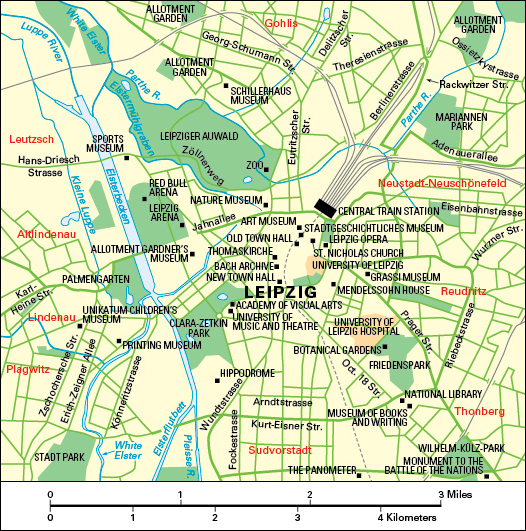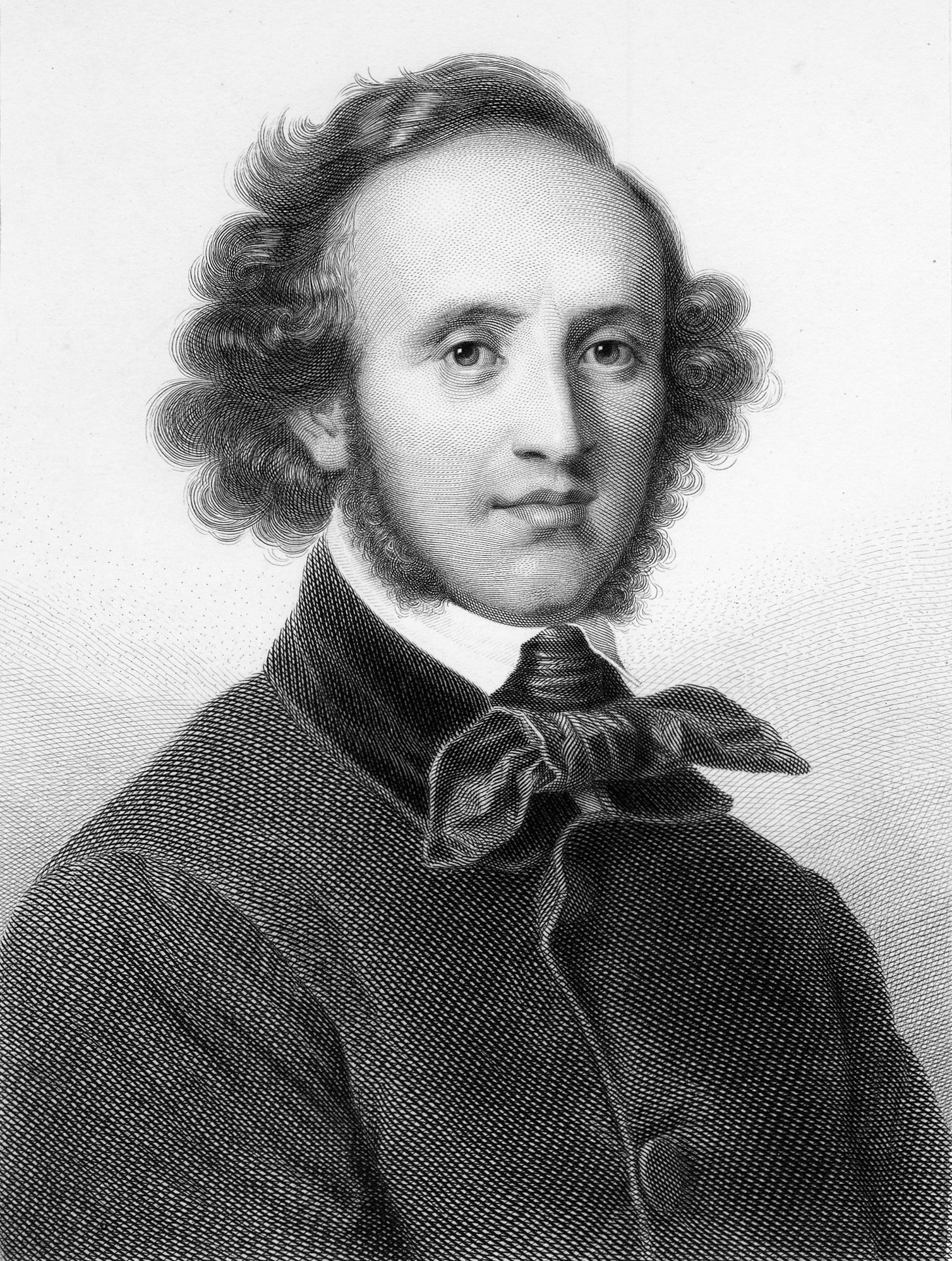Leipzig << LYP sihg >> (pop. 502,979) is an important commercial, cultural, and manufacturing city in east-central Germany. It stands at the junction of the Luppe, Parthe, and Pleisse rivers, which flow into a larger river, the White Elster. The city’s position at the intersection of transportation routes led to its development as a trade center during the Middle Ages, the period from about the 400’s to the 1400’s. Leipzig is famous for its trade fairs, where for hundreds of years people have shown products, demonstrated industrial processes, and promoted trade. The city’s residents are known for their cultural, literary, and musical talents.

The city.
Leipzig is one of the largest cities in the state of Saxony. The inner portion of Leipzig contains a number of historic buildings, some of which were restored after being damaged in World War II (1939-1945). Leipzig’s main railway station, which was destroyed in the war and later rebuilt, is one of Europe’s largest. Other notable buildings include the Old Town Hall—one of the great works of German Renaissance architecture—and St. Nicholas Church. St. Nicholas Church was the starting point for the peaceful “Monday Demonstrations” of 1989 and 1990, which opposed the Communist rule in East Germany. Leipzig is also home to many choirs, museums, orchestras, and theaters.
Outside the central city are several modern residential and commercial areas, and two of Germany’s largest shopping malls. In 1996, a new exhibition center for trade fairs opened at Leipzig’s northern edge.
Economy.
Leipzig is a major banking, business, retail, and wholesale service center for the state of Saxony. Trade fairs remain an important part of Leipzig’s economy. However, the city also has a number of large factories that manufacture automobiles, electronics, and other items. Many Leipzig residents work in the media industries, producing books, films, magazines, newspapers, radio shows, and television programs. Other important industries include education and transportation.
History.
The earliest known mention of Leipzig dates back to 1015. Leipzig became a city under the Holy Roman Empire—a German-based empire in western and central Europe—in 1165.
The University of Leipzig, founded in 1409, is one of the oldest universities in Germany. People who studied there include the poet Johann Wolfgang von Goethe, the philosopher Friedrich Nietzsche, and the composer Richard Wagner. The religious leader Martin Luther debated in Leipzig in the 1500’s, during the Reformation movement that led to the birth of Protestantism. The composer Johann Sebastian Bach moved to Leipzig in 1723 and spent much of his life there. In 1835, the composer Felix Mendelssohn became conductor of the famous Leipzig Gewandhaus (Cloth Hall) Orchestra. 
Leipzig was the site of a number of developments in the areas of manufacturing, media, and transportation. The city’s printing industry dates from around 1480. In 1650, the world’s first daily newspaper began publication in Leipzig. Germany’s first rail line opened in 1839 between Dresden and Leipzig.
The Leipzig area was also the site of a number of historic battles and political events. During the Thirty Years’ War (1618-1648), armies fought three major battles near Leipzig. In the Battle of Leipzig (also called the Battle of the Nations) in 1813, Austrian, Prussian, Russian, and Swedish forces defeated the French Emperor Napoleon I’s armies in the largest battle of the Napoleonic Wars (1796-1815). In 1913, on the 100th anniversary of the battle, the massive Monument to the Battle of the Nations was dedicated in Leipzig. After World War II, Leipzig became part of East Germany. In 1989 and 1990, peaceful demonstrations in Leipzig played a major role in ending the rule of the Communist government in East Germany. East Germany and West Germany unified in 1990.
